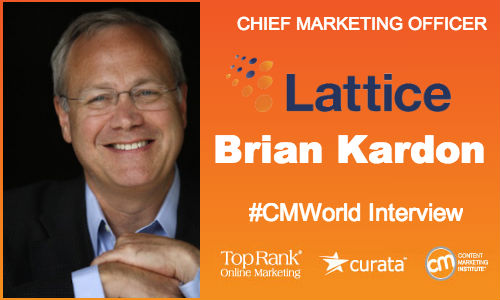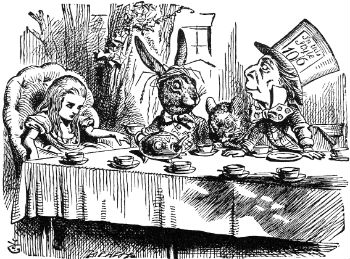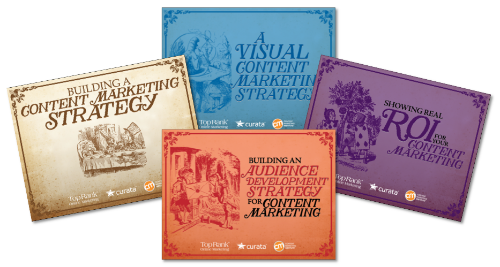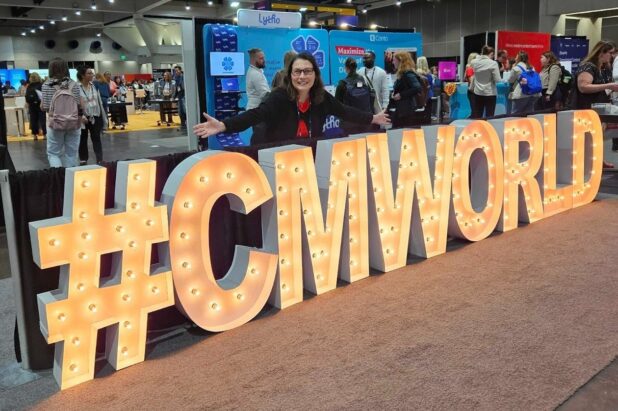
What if you could tap the mind of a CMO who’s led marketing organizations at companies like Eloqua and Forrester Research to capture insights about content marketing strategy and ROI? That’s a big “what if”.
Well my marketing friends, today is your content marketing birthday because today we have with us Brian Kardon, CMO at Lattice Engines. Brian was formerly CMO at both Eloqua and Forrester Research as well as SVP of Marketing at Reed Business Information – one heck of a marketing pedigree.
As part of our series of #CMWorld Content Marketing Interviews, we’re talking with a few select speakers from Content Marketing World about content marketing strategy, audience development, the role of visual content, content ROI and of course, marketing lessons learned from favorite childhood stories.
Let’s dig in:
How important is it for a company to have a content marketing strategy defined before asking internally for budget or engaging an outside consultant? Can experimentation lead to strategy or is a hybrid approach more practical?
Waiting for a fully developed “strategy” — including the blessing and funding from management — is incredibly common. And a really bad idea. You need to begin writing and connecting now.
Search engines and readers don’t care that you have a well-documented strategy @bkardon
Many start-ups, for example, start blogging and producing content long before they have sold their first product. Search engines and readers don’t care that you have a well-documented strategy. Success will generate it’s own approvals and budgets. Don’t be sidelined. Start doing. No one needs a 20-page business plan to create and share helpful content. What you do need is a strong understanding of your audience and their needs. More often than not, a successful strategy will emerge from 6-12 months of doing and understanding what is working and what is not. Be iterative. Start now and make adjustments along the way as you learn
What are some ways you can use audience insights to inform your content planning and promotion?
Insights into your audience’s challenges, opportunities, preferences and interests should be used in creating your content plan and distribution strategy. There are plenty of excellent resources on persona research, but in simple terms, think about these four questions when getting started with content planning and promotion.
- What keeps my audience up at night?
- What are their goals/motivations?
- Where do they turn to for information or help?
- Do they have any preferences around format?
The answers to these questions help ensure that you are creating content that speaks to, engages and gets in front of your target buyers. For example, the insights may lead you to create a series of how-to videos or guides that explain how to improve (insert critical pain point here). You also may learn about your audience’s watering holes (where they look to for information online) or influencers. These channels could be perfect targets for your content distribution plan. Lastly, your insights may indicate that your audience is too busy to read a 30-page “definitive guide” and that they prefer shorter, more visual content.
Visuals in content marketing are increasingly popular but how important are they really? Is this the beginning of the end of text or just a phase?
From our experience, everyone has preferred ways of interacting with different forms of content. There is no single “best” format for every consumer. We still see high reader engagement with longer forms of written content if the information is valuable. But that is not for everyone. Me? I love video — for learning cooking recipes, doing home repair projects, and getting tips on jazz improvisation. Everyone is different.
You wouldn’t put wine in a beer glass or eat hummus through a straw. So don’t try to explain digital marketing strategy in a tweet @bkardon
You need to showcase the content in the form best suited to it. You wouldn’t put wine in a beer glass or eat hummus through a straw. So don’t try to explain digital marketing strategy in a tweet. However, there is also something bigger going on. There is more, way more, competition for our attention. In a world of scarce information, your content will get more engagement. But in today’s world of abundant information, you need to stand out with content that engages faster with instant appeal. Visuals can help to do that. I don’t think the end of text is at hand. You just need to do it better to stand out amongst the noise.
Is Content Marketing ROI really that hard? What are you doing to measure content marketing performance?
Marketers are doing a better job than ever at measuring their content. It all began with “vanity metrics”: followers, tweets, retweets, downloads, number of comments, likes, etc. Many marketers are still stuck in vanity land (sometimes called “consumption” metrics). They are easy to collect and, frankly, easy to manipulate.
More enlightened marketers are measuring “revenue attribution.” Revenue attribution looks at the sales that were generated for a company and identifies the content that was engaged in the course of the buyers’ journey. Each piece of content that was engaged in the journey is attributed to that sale. For simplicity sake, if a deal was won for $10,000 and the buyer engaged with five pieces of content, each piece of content is attributed with $2,000 of revenue. Marketers now have marketing automation systems that can generally track this if the process is properly designed. By looking at revenue attribution, marketers can judge the value that each piece of content has to the ultimate business objective — revenue growth.

In the spirit of the Content Marketing in Wonderland (Alice) theme of the #CMWorld eBook series, what was your favorite story from childhood? Any lessons in it for business or marketing today?
I actually have three favorites that have an important message for marketers:
Mary Poppins. At a point in the story, Mary and the kids are facing the task of cleaning up an incredibly messy house. There’s this great lyric from “A Spoonful of Sugar”: “In every job that must be done, there is an element of fun. You find the fun, and the job’s a game.” I think this rings true for marketers. We are all about learning about new tactics, experimenting with new technologies and playing to find what works. So let go and remember to have a little fun.
Jack and the Beanstalk. All too often we are just like Jack — looking for the magic beans to solve a problem and help us achieve our goals. The lesson for marketers is that there is no silver bullet. Success comes from experimenting and learning from those experiences.
Curious George. I really relate to this little monkey. It pays to be curious. Curious about your market. Curious about your product. Curious about your customers. Keep asking questions.
Great advice Brian, thank you!

You can get even more of Brian’s content marketing wisdom from the #CMWorld eBook – Content Marketing in Wonderland: Building a Content Marketing Strategy.
In fact, if you would like to tap into a entire army of content marketing experts, then be sure to check out the Content Marketing World conference coming up Sept 8-11 in Cleveland. If you use the discount code, TopRank, you’ll save $100 off main event and all-access registrations.
A big thank you goes to the eBooks’ sponsor, Curata (content curation and content marketing solution). All of us at TopRank Online Marketing, CMI and the broader content marketing industry benefits from their support of this eBook program!


